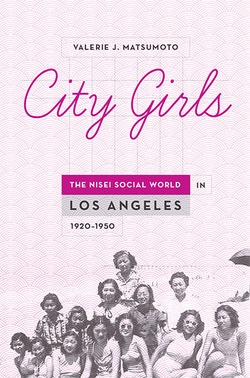In City Girls: The Nisei Social World in Los Angeles, 1920-1950, author Professor Valerie Matsumoto has opened a time capsule in the vaults of American history, zeroing in on the lives of Nisei women in Los Angeles and their exploits of club and community involvements spanning three decades—prewar, World War II, and postwar.
City Girls chronicles the Nisei women’s roles as “markers of family respectability” and visible community representatives during a time replete with pervasive social and economic barriers. The unjust exclusionary practices of their times—observed at beaches, hotels, restaurants, amusement parks, and schools—gave rise to the formation of Nisei clubs by the 1930s. These clubs were often affiliated with the YWCA, Girl Scouts, and local Christian churches and Buddhist temples.
Club involvement provided a network for young Nisei women that they would not have otherwise found outside of their schools and ethnic enclaves. Numerous clubs were formed and they ranged in activities. From book reading clubs, basketball clubs, crafts and hobbies, hiking, roller-skating, to community volunteer work—there was a club for all types of interests. Dances also played crucial roles in courtships as they provided opportunities for young Nisei women to meet young Nisei men. As a collective, these clubs opened the doors for Nisei women to forge lasting friendships and establish strong community ties. Furthermore, club activities enabled Nisei women to acquire organizational skills and hold leadership positions. These same skills proved instrumental during the dark and challenging days of wrongful incarceration and during postwar resettlement as Nisei women matured and entered the work force.
City Girls is a fascinating “must read” as it offers an in-depth look into a subject that is often overlooked in history books. The Nisei women earned a place in history as pioneers and their struggles and breakthroughs should not be forgotten. The personal anecdotes that fill its pages are funny, sad, insightful, humbling, and most importantly, honest.
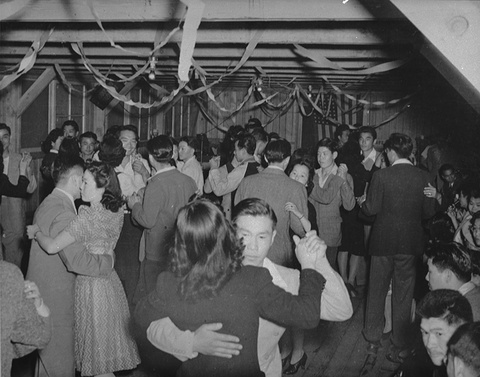
Below is a Q&A exchange with Professor Matsumoto.
Q: How did the subject matter come to your attention?
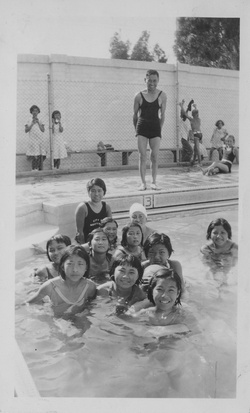
A: The Nisei members of the Center for Japanese American Studies (CJAS) in San Francisco sparked this research. After I completed my PhD dissertation about the history of the Cortez farming community in the San Joaquin Valley, the CJAS invited me to give a presentation about rural Nisei youth before World War II. After I described the round of farm work and school that filled the hours of Nisei girls and boys, the CJAS members began to regale me with stories of their youth in the city: parties! dancing! Because of my family’s rural roots, I had never heard about the urban Japanese American youth clubs and social activities of the 1930s. The CJAS members also told me about the Nisei-run English-language sections of the prewar press, a lively record of club events, advice columns, pen-pal networks, and much more.
Q: The book contains great anecdotal information and insight into the day-to-day lives of Issei and Nisei. Given the harsh times during incarceration followed by the hostile resettlement period, was there resistance from research participants to open up and share their experiences? How did you gain access to such personal and sensitive accounts?
A: I was very fortunate to make contact with a few Nisei women who generously shared their experiences and family history. The Rafu Shimpo and Kashu Mainichi newspapers, as well as memoirs, also offered a wealth of material from the 1920s to the 1950s.
Q: The racial barriers set against Japanese Americans—prewar, wartime, and postwar—were unprecedented. What are some of the barriers you see today and how can the current generation of Nisei/Sansei/Yonsei women help overcome them? What call to action would you encourage?
A: It’s exciting to see how Japanese American women and men of all generations have tackled a wide array of issues, from the redress movement and urban redevelopment to media stereotyping, environmental concerns, creative expression, health care access, and policy making. I’d like to quote renowned Nisei activist Aiko Herzig-Yoshinaga who said at a JANM program, “I’m very excited to see so many young women active in issues of social justice. I exhort you to go for it. Don’t let age deter you!”
Q: Little Tokyo has gone through a revitalization in the last several years. How do you view its importance as an ethnic enclave with regard to the Greater Los Angeles area?
A: For the Issei and Nisei in the 1920s and 1930s, Little Tokyo was a key hub, offering ethnic food and groceries, employment agencies, lodging, and entertainment. As one of three surviving Japan-towns on the West Coast, Little Tokyo remains an important historic site; the public art work “Remembering Old Little Tokyo / Omoide No Shotokyo,” embedded in the sidewalk surrounding the block of First Street between San Pedro and Central, reminds us of the past on which we stand. Little Tokyo is also important as a multi-ethnic community that offers a window into the dynamics of urban housing, art, food, commerce, and politics.
Q: What was the most profound discovery you made while writing City Girls?
A: There were many exciting discoveries and it is impossible to single out one as most profound. Among the things I learned, I was greatly struck by the wide range of roles played by girls and young women in the urban Japanese American community, before, during, and after the war. From an early age, many helped to support their families, often working in family businesses such as restaurants or stores. They were often called upon to dress in kimono and represent the ethnic community at civic events; they also provided community entertainment, performing in plays, concerts, dance recitals, and talent shows. In addition, youth clubs usually included community service projects in their annual round of activities. I was also surprised to discover that many Nisei formed lifelong friendships in their clubs; some, such as the Atomettes and the JUGS (Just Us Girls), still get together today.
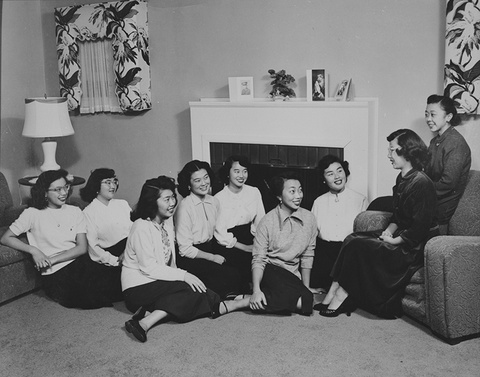
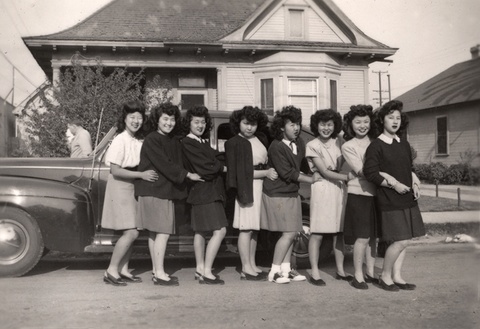
* * * * *
Professor Valerie Matsumoto will speak about City Girl at the Japanese American National Museum on September 20, 2014 at 2 p.m. Click here for more details.
Valerie J. Matsumoto is a professor in the Department of History and the Department of Asian American Studies at UCLA. In addition to her new book City Girls: The Nisei Social World in Los Angeles, 1920-1950, she is the author of Farming the Home Place: A Japanese American Community in California, 1919-1982 and co-edited the essay collection Over the Edge: Remapping the American West. Her essay “Pioneers, Renegades, and Visionaries: Asian American Women Artists in California, 1890s-1960s,” appeared in Asian American Art: A History, 1850-1970, edited by Mark D. Johnson, Gordon Chang, and Paul Karlstrom. She was the first recipient of the Toshio and Doris Hoshide Distinguished Teaching Award (2006), received the UCLA Distinguished Teaching Award (2007), and has twice received the Award for Excellence in Graduate Mentoring and Teaching from the UCLA Asian American Studies Graduate Student Association (2007, 2013).
© 2014 Japanese American National Museum


